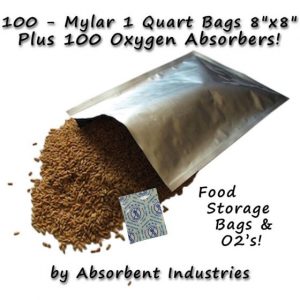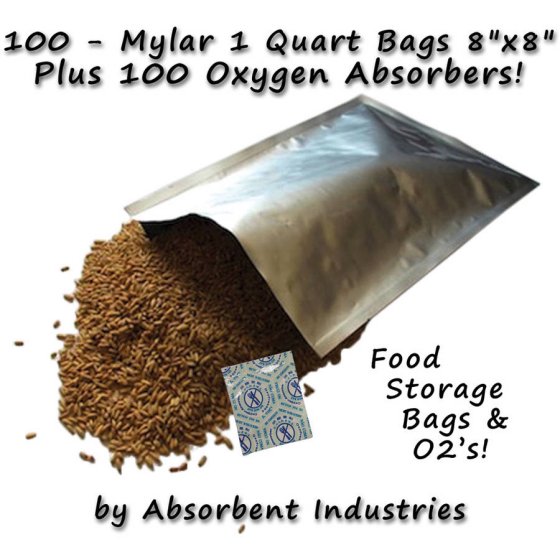 Tired of your food going bad within a couple of days, maybe even a couple of hours, of preparing it?
Tired of your food going bad within a couple of days, maybe even a couple of hours, of preparing it?
Frustrated with having to throw away certain emergency food items when you forget, or are unable, to rotate them out?
We are too! And we’ve pinpointed the problem! When food is exposed to even the tiniest amount of air it immediately begins to deteriorate. And we’re talking the remainder of air in a sealed Zip-lock bag. THAT tiny!
The best way to prevent this from happening is to make sure to seal everything real tight, double-bag, vacuum pack it, wrap it, or buy lots of Tupperware. However, the most efficient and cost-effective way to preserve your food would be to invest in oxygen absorbers. Warning: This post has a bit of math to work out the size you’ll need, but if you can make your way through the maze you’ll end up saving yourself a ton of food and grocery bills.
It’s the oxygen – not the air
More than any other atmospheric element, oxygen supports the growth of aerobic microorganisms such as fungi and mold. With the growth of these microorganisms, the integrity of a package is drastically compromised. In food products, discoloration takes place, rancidity and putrefaction set in, and the possibility of food poisoning is ever present.
Oxygen absorbers are a non-toxic chemical compound which, when placed in a properly sealed package, reduce the inner oxygen level considerably. Oxygen, along with moisture, may cause spoilage. Reducing it increases shelf life by inhibiting oxidation (deterioration) of vitamins, spices, fats and oils, and preventing mold growth. They are good for both long and short-term (sending cookies, etc.) packaging needs. Absorbers are labeled by how many cubic centimeters (cc’s) of oxygen they will absorb (400cc, 500cc, etc.). They can be found at rainydayfoods.com, sorbentsystems.com, or by calling packaging companies in your local yellow pages.
Dry grains, legumes, powders, etc. have low water activity (WA) levels, and require absorbers that activate rapidly (sometimes known as ‘D’ absorbers), a few minutes after being opened.
First you must determine the volume of air your container will hold (when empty) in cubic centimeters (cc):
#10 can = 3,950 cc
1 gallon plastic pail/ Mylar bag = 3,788.4 cc
5 gallon plastic pail/ Mylar bag = 18,942 cc
6 gallon plastic pail/ Mylar bag = 22,730.4 cc
Industry standard states that when your container is full of what you packaged (grains, beans, legumes) there will be 38% of air-filled space remaining (in the very top and between the grains) in the container.
For example, if you filled a #10 can with beans, all but 38% of the can’s volume would be taken up. So 1,501 cc of air would be left (3,950cc x .38 = 1,501 cc). But the air isn’t what you want to absorb – you want the oxygen in the air. Since oxygen makes up only 21.5% of the total volume of air, you must find 21.5% of 1,501 cc, or (1,501 x .215), which comes to approx. 323 cc of oxygen. Therefore, a 400cc oxygen absorber would be more than enough to keep your goods safe.
Phew! I warned you there’d be some math.

